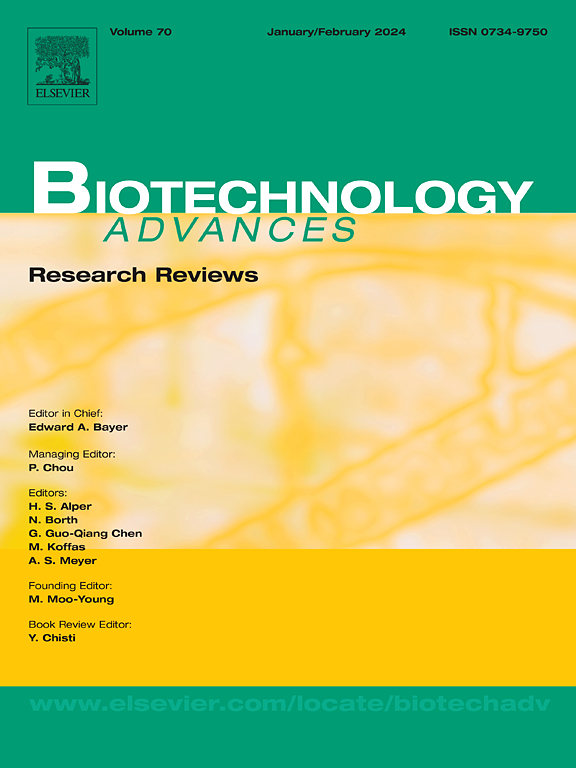Bacteria-microalgae interactions from an evolutionary perspective and their biotechnological significance
IF 12.1
1区 工程技术
Q1 BIOTECHNOLOGY & APPLIED MICROBIOLOGY
引用次数: 0
Abstract
Interactions between bacteria and microalgae have been studied in natural environments and in industrial consortia. As results of co-evolution for millions of years in nature, they have developed complex symbiotic relationships, including mutualism, commensalism and parasitism, the nature of which is decided by mechanisms of the interaction. There are two main types of molecular interactions between microalgae and bacteria: exchange of nutrients and release of signalling molecules. Nutrient exchange includes transport of organic carbon from microalgae to bacteria and nutrient nitrogen released from nitrogen-fixing bacteria to microalgae, as well as reciprocal supply of micronutrients such as B vitamins and iron. Signalling molecules such as phytohormones secreted by microalgae and quorum sensing molecules secreted by bacteria have been shown to positively affect growth and metabolism of the symbiotic partner. However, there are still a number of potential microalgae-bacteria interactions that have not been well explored, including cyclic peptides, other quorum signalling molecules, and extracellular vesicles involved in exchange of genetic materials. A more thorough understanding of these interactions may not only result in a deeper understanding of the relationships between these symbiotic organisms but also have potential biotechnological applications. Upon new mechanisms of interaction being identified and characterized, novel bioprocesses of synthetic ecology might be developed especially for wastewater treatment and production of biofertilizers and biofuels.
从进化角度看细菌与微藻的相互作用及其生物技术意义
细菌和微藻之间的相互作用已经在自然环境和工业联合体中进行了研究。作为自然界数百万年共同进化的结果,它们发展了复杂的共生关系,包括互惠、共生和寄生,其性质由相互作用的机制决定。微藻和细菌之间的分子相互作用主要有两种:营养物质的交换和信号分子的释放。营养交换包括微藻向细菌输送有机碳和固氮细菌向微藻释放营养氮,以及B族维生素和铁等微量营养素的相互供应。微藻分泌的植物激素和细菌分泌的群体感应分子等信号分子已被证明对共生伙伴的生长和代谢有积极影响。然而,仍有许多潜在的微藻-细菌相互作用尚未得到很好的探索,包括环肽、其他群体信号分子和参与遗传物质交换的细胞外囊泡。对这些相互作用的更彻底的了解不仅可能导致对这些共生生物之间关系的更深层次的理解,而且还具有潜在的生物技术应用。随着新的相互作用机制的确定和表征,合成生态学的新生物工艺可能会被开发出来,特别是用于废水处理和生物肥料和生物燃料的生产。
本文章由计算机程序翻译,如有差异,请以英文原文为准。
求助全文
约1分钟内获得全文
求助全文
来源期刊

Biotechnology advances
工程技术-生物工程与应用微生物
CiteScore
25.50
自引率
2.50%
发文量
167
审稿时长
37 days
期刊介绍:
Biotechnology Advances is a comprehensive review journal that covers all aspects of the multidisciplinary field of biotechnology. The journal focuses on biotechnology principles and their applications in various industries, agriculture, medicine, environmental concerns, and regulatory issues. It publishes authoritative articles that highlight current developments and future trends in the field of biotechnology. The journal invites submissions of manuscripts that are relevant and appropriate. It targets a wide audience, including scientists, engineers, students, instructors, researchers, practitioners, managers, governments, and other stakeholders in the field. Additionally, special issues are published based on selected presentations from recent relevant conferences in collaboration with the organizations hosting those conferences.
 求助内容:
求助内容: 应助结果提醒方式:
应助结果提醒方式:


